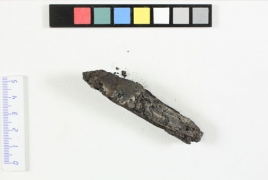
The scientific world is developing a knack for reading texts without opening them, Engadget said.
Researchers in Israel and the U.S. have conducted the first "virtual unwrapping" of a heavily damaged scroll, the En-Gedi scroll, to read its contents without destroying what's left. The team used a high-resolution volumetric scan to create a 3D model of the scroll, looked for bright pixels in the model (a sign of where the ink would be) and virtually flattened the scroll to make text segments readable.
The process is slow, as you have to piece together segments and reconstruct lines of text that have been lost to the ages. However, the results were worth it in this case: the researchers discovered that this is the earliest known copy of a Pentateuchal book from the Bible (Leviticus) to be found in a Holy Ark, dating back "at least" 1,500 years. The technique won't get a wide range of use when there are only so many ancient scrolls to go around, but it hints that even the most fragile pieces of written history are no longer off-limits.

